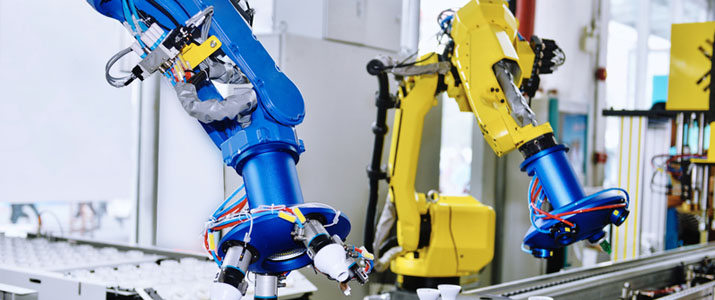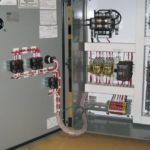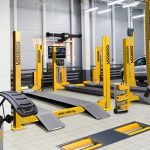
How are robots used in the automotive industryIn the last six years, (2010-2015), according to the IFR (International Federation of Robotics), US business has installed around 135,000 new industrial robots. Welding robots have been utilized in automotive manufacturing because the 1980s, traditionally for spot and arc welding. Today’s smart six-axis robots are becoming increasingly versatile and precise. They are in a position to carry out a range of welding techniques from laser to friction. Welding automation is also going one step additional, metamorphosing into full bodywork options.
Almost half of the world’s automation technology is being utilized by the automotive market. With an increase in consumer demand, the automation technology has expanded its scope and applicability. The automated production processes assist producers increase their profit potential and meet market expectations. Robotics improve the general efficiency of a manufacturing process by making efficient indicates of finishing production tasks. As opposed to humans, robots do not get tired and can perform for days while meeting the high quality and quantity requirements simultaneously. Contemporary industrial robots have the capability to adapt and take crucial decisions in the course of operations.
Of course, automanufacturing plants aren’t the only ones being taken more than by robots. Proper now there are more than 190,000 ABB robots in automotive factories worldwide, and final year ABB unveiled FRIDA , the two-armed, headless idea robot that’s meant to do what human assembly line workers can to, but do it greater. FRIDA’s tiny size and 7 degrees-of-freedom arms makes for easy installation and flexibility to do whatever a distinct manufacturing plant wants it to do.
Leading Robotic Applications In Automotive Industryhow are robots used in the car industry
how are robots used in the automotive industryThe automotive industry’s demand for industrial robots is forecast to treble in the subsequent seven years, according to a new report. Automotive robots have made factories safer due to the fact they eradicate the likelihood of human errors causing accidents. An automotive robot can also operate in dangerous situations as they can withstand heat, chemicals, and can come into make contact with with structures and components. Becoming in a position to perform hazardous jobs has helped defend not only workers but also future shoppers simply because robots can perform crash tests that evaluate the safety of the automobiles becoming manufactured. Crash tests along with many other jobs in the automotive business would be also risky for humans to complete.
Automotive sector is 1 of the key business sectors which have accepted robotic application considering that 1960. Transportation and mobility has been in limelight because the development of motor vehicles. Demand for purchasers has enhanced year-on-year and still continue. Specifically in establishing economies in Asia and nation like India has observed golden days for automotive industry in terms of demands.
Holger Masser is worldwide vice president of the global organization unit Industry Organization Solution of the Automotive Market at SAP. He is responsible for the whole remedy portfolio spanning from automotive supplier, automotive OEM, and automotive retail, and importer enterprise. He joined SAP in 2011 and has been working for more then 20 years in the automotive sector, with ten years in Asia. Masser has profound knowledge in the whole value chain of the automotive enterprise, implementing extended-term IT techniques aligned with corporate firm objectives and business strategy. In Asia, he primarily focused on logistics, sales, aftersales, production and economic services on automotive OEM, retail, wholesale, and regional and headquarter levels.
Robots Are Coming, Gradually And Steadily, To Automotive Manufacturing In Tennessee
how are robots used in the car industryIn the last six years, (2010-2015), according to the IFR (International Federation of Robotics), US industry has installed around 135,000 new industrial robots. The automotive market is currently one particular of the most heavily automated industries, with the Fourth Industrial Revolution (Business 4.) anticipated to increase the number of robots in auto manufacturing even further. The German car industry is at the forefront of Industry 4., introducing small-scale collaborative robots on the assembly line for the initial time.
Auto assembly operations and automotive component makers are some of the greatest users of robots in the car manufacturing sector. Robots are less complicated to plan and deploy than ever, but each integration project comes with unique challenges. That is why companies interested in adopting automotive robotics ought to function with an experienced integration companion for style and installation.
Right now, the robot density in the automotive sector of the United States rank second worldwide to that of Japan. The industrial renaissance in North America continues unabated offered the worldwide economy remains stable, it is estimated that robot shipments to Canada, Mexico and the US will develop at an average annual rate of five% to 10%.
Automotive & Roboticshow are robots used in the car industry
how are robots used in the automotive industryIn the last six years, (2010-2015), according to the IFR (International Federation of Robotics), US business has installed about 135,000 new industrial robots. U.S. automakers are one particular of the world’s most significant users of industrial robots. According to the International Federation of Robotics, the U.S. vehicle business had 127,000 industrial robots installed in 2016, up 70% from 2006. In the wake of the worldwide financial crisis, Basic Motors and other automakers held back on investment in new plants, instead focusing on raising productivity. They did this mainly with robots.
Yet another aspect that is holding back adoption of robotic systems is a lack of accessible capabilities. Unfortunately, this is a wider difficulty that impacts more than just the robotics market, but finding technicians, engineers and managers who have the capabilities to conceptualise, specify, acquire, install and manage robotic systems is typically off-placing for organisations. As these engineers are scarce, they are in higher demand and can be extremely mobile. The situation is complicated further by a scarcity of training and education courses accessible to develop or re-train engineers. With such a lack of skilled engineers, it is hardly surprising that there is not the capacity or knowledge either within organisations or in the supply chain to develop, install and handle robotics systems appropriately and efficiently.
Tesla, a U.S. electric car manufacturer, relies heavily on automation. Elon Musk, the company’s CEO, announced plans to improve the company’s production capacity fivefold to 500,000 cars a year by 2018. Several in the market are skeptical he can pull this off, but if he does, it will be nearly completely due to a manufacturing model driven by robots.









